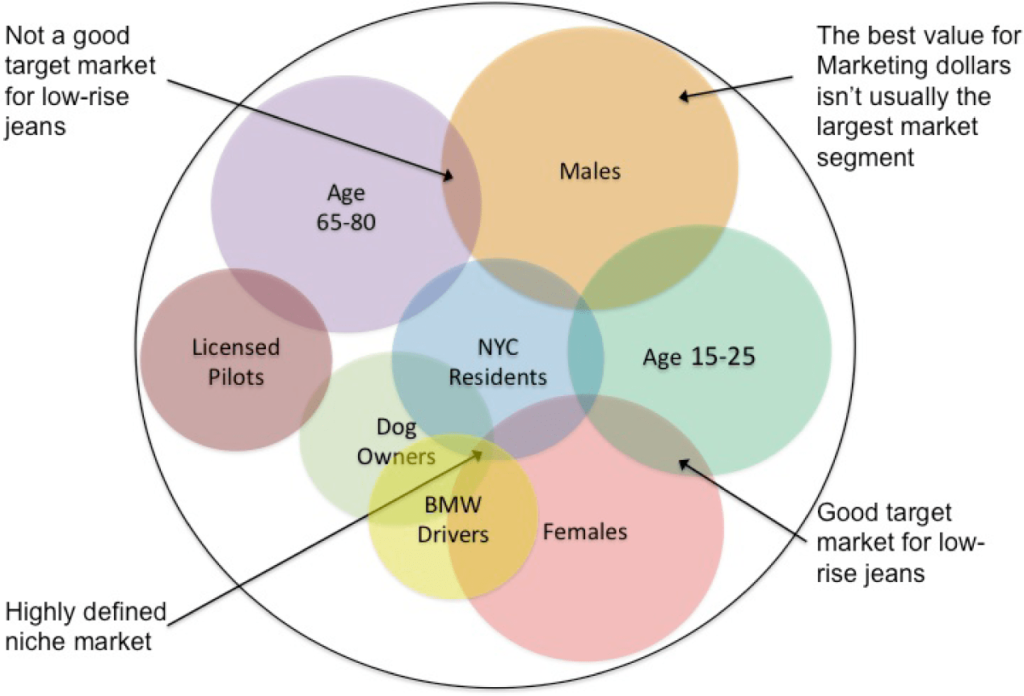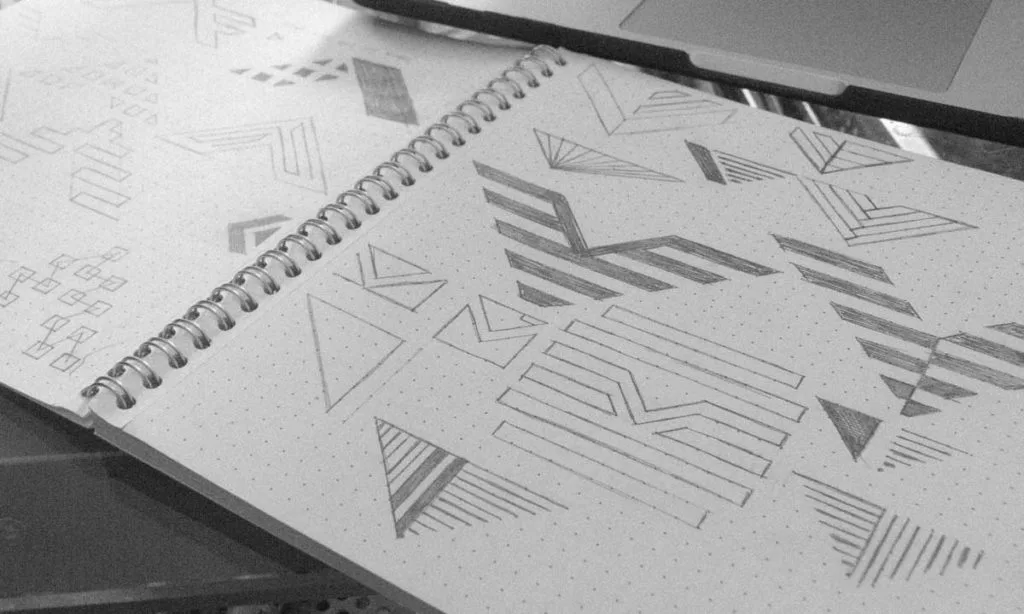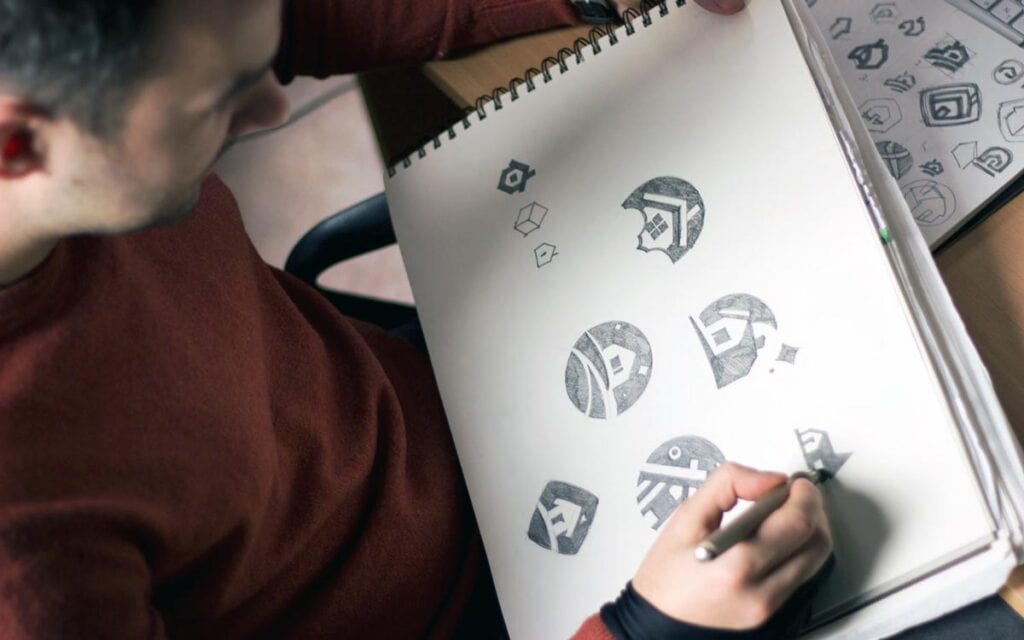How are Logos Designed? The Art, Science and Secrets
Picture this: you're strolling through a store or browsing online, and you catch a glimpse of a logo that immediately reminds you of a particular brand. It's no secret that the world's most iconic brands have logos etched in our minds. But have you ever stopped to ponder how these captivating logos come to life?
I'll tell you a little secret: logo design is an enchanting fusion of art and science, merging imagination with methodical thinking.
In this comprehensive guide, we'll delve into the intriguing process of showing how are logos designed, uncover the elements that make a logo genuinely successful, and identify the trends shaping the future of logo design. Did you know that it only takes consumers 10 seconds to form a first impression of a logo? So let's dive in and learn how to make every second count!
Table of Contents
How are Logos Designed?
We all know that a logo is worth a thousand words. It's the visual representation of a brand's identity, acting as a powerful first impression that can make or break the connection with potential customers. But what exactly goes into crafting a logo that resonates with your target audience and stands the test of time?
We'll unravel the fascinating journey of logo creation, guiding you step-by-step through the design process, from the initial spark of inspiration to the final masterpiece. Prepare to embark on an adventure that will elevate your brand and breathe life into your logo!
Understanding the Brand

To create a successful logo design, it is crucial to have a comprehensive understanding of the brand. This process involves various steps that will help you to gain insights into the company's identity, vision, and goals. By clearly understanding the brand, you can create a visually appealing logo that resonates with the company's values and appeals to its target audience.
The first step is researching the company's history, mission, and values. Doing so lets you understand what the brand stands for, its purpose, and what makes it unique. This will also help you identify past branding efforts and understand how the brand has evolved. Additionally, it can provide inspiration and ideas for your design process.
The second step is identifying the target audience and their preferences. Understanding the target audience's demographics, behaviours, and psychographics can help you create a logo that appeals to them. By understanding their preferences, you can make informed design decisions that resonate with them and make the brand stand out in the market.
The third step is analysing the competitive landscape. By researching the competitors in the market, you can understand what they are doing well and what they could be doing better. This can provide insights into what works in the industry and doesn't. It can also help you differentiate the brand from its competitors, making it more memorable and recognisable.
Finally, determining the brand personality and positioning is essential. This involves understanding how the brand wants to be perceived by its audience and its unique selling points. By identifying the brand's personality and positioning, you can create a logo that accurately represents the brand's identity and values.
Conceptualising and Sketching
So, now that the designer has a good grasp of the brand's identity, it's time to get creative and start conceptualising the logo design. This is where the fun really begins!
The first step in this process is often mind mapping and word association exercises. These can generate a broad range of ideas and concepts related to the brand. The designer might jot down keywords, draw connections between concepts, and explore different visual directions. This can spark new ideas and get the creative juices flowing.
Once some initial ideas have been generated, it's time to start sketching! The designer will likely begin with hand-drawn sketches, which can quickly and effectively explore different concepts. These sketches might be rough and imperfect, but they can help capture an idea's essence and refine it over time.
Designers might experiment with different shapes, symbols, and typefaces as they narrow their ideas. They'll look for elements that work together to create a cohesive and impactful logo. This can involve playing around with different combinations and layouts and testing how the logo looks in different sizes and contexts.
Overall, this stage is all about exploring different ideas and pushing the boundaries of what's possible. It's a time to experiment, take risks, and let the creative process guide the way. By the end of this stage, the designer will have a range of sketches and concepts to choose from, and they'll be ready to move on to the next phase of the design process.

Refining the Logo Design
Now that the designer has explored different concepts and sketched some initial ideas, it's time to refine the logo design. This is where the designer takes the most promising concepts and brings them to life digitally.
The designer will select the most substantial ideas and develop several variations. This can involve exploring different shapes, colours, and fonts and experimenting with different layouts and compositions. The goal is to create a range of options that capture the brand's essence and are visually striking.
Once the designer has several variations of the chosen concepts, they will begin fine-tuning the details. This can include adjusting the colour scheme to ensure consistency with the brand's identity and values, selecting the perfect typography to enhance readability and visual impact, and refining the layout to ensure the logo is balanced and easily recognisable.
The designer will likely share the refined logo concepts with the client and gather feedback. This feedback can be precious in shaping the final design, as it provides insights into how the logo is perceived by its intended audience. Based on this feedback, the designer will revise the logo design, considering any suggested changes or concerns.
Finalising the Design
First things first, the designer will create different file formats that are suitable for various applications. This means the logo should look great in print and on the web. You'll need high-resolution files for printing and optimised files for web and social media platforms. That way, your logo will look crisp and clear no matter where it's used.
In addition to file formats, the designer will develop a style guide outlining your logo's usage guidelines and colour codes. This essential document ensures that your logo is used consistently across all marketing materials, such as business cards, brochures, and websites. Providing the logo is used correctly and doesn't become distorted or pixelated due to poor resolution or resizing is vital.
Lastly, the designer will ensure that the logo is adaptable and scalable. Your logo should be easily resized without losing its quality or becoming distorted. It should also be adjustable, meaning it can be used in different colours or orientations while maintaining its identity.
In conclusion, finalising the design of your logo is crucial to ensure that it's versatile, adaptable, and usable across different marketing platforms. You'll want to create different file formats for various applications, develop a style guide, and ensure the logo is adaptable and scalable. With these steps, you'll have a great logo representing your brand.
Factors That Make a Logo Successful

A successful logo should be memorable, versatile, and convey the brand's essence. Key factors include:
- Simplicity: Simple logos are more easily recognised and remembered. They also work better across various mediums and sizes.
- Relevance: A logo should be appropriate for the brand's industry and resonate with its target audience.
- Distinctiveness: A unique and creative logo helps a brand stand out.
- Timelessness: A well-designed logo should withstand the test of time and appear modern.
Logo Design Trends
An effective logo must be memorable and enduring, able to stand the test of time. Let's discuss timeless logo design trends that have proved their staying power in the constantly evolving design world.
1 – Simplicity
Simplicity is the foundation of a timeless logo. A simple logo allows for easy recognition and memorability, ensuring that the logo stays relevant and practical for years. Brands like Apple, Nike, and McDonald's have successfully harnessed the power of simplicity in their logos. To create a simple logo, focus on the following:
- Minimalism: Use only essential elements to convey the brand message.
- Scalability: Ensure the logo is legible and recognisable in various sizes.
- Versatility: Design a logo that works well across multiple platforms and mediums.
2 – Negative Space
Using negative space effectively can create a visually compelling and memorable logo. This design technique uses empty spaces around and between elements to create an additional image or symbol. Well-known examples include the FedEx logo, which hides an arrow between the “E” and “x,” and the WWF logo, with its clever use of negative space to form a panda. When utilising negative space, consider the following:
- Balance: Ensure that the negative space complements the positive space in the design.
- Clarity: Make sure the hidden image or symbol is easily discernible.
- Relevance: The hidden element should align with the brand's identity and message.
3 – Typography
Typography-based logos rely on the power of text to convey a brand's identity. These logos can be timeless if they utilise classic typefaces and strongly focus on legibility and readability. Examples include Coca-Cola, Google, and IBM. To create a timeless typographic logo, consider the following:
- Choosing an appropriate typeface: Select a font that complements the brand's personality and values.
- Customising the type: Modify and personalise the typeface to make it unique to your brand.
- Balancing simplicity and creativity: Explore creative ways to present the brand name while maintaining legibility.
4 – Geometric Shapes
Geometric shapes are a classic element in logo design. They convey stability, balance, and unity. Timeless logos such as Adidas, Pepsi, and Mercedes-Benz use geometric shapes effectively. To create a logo with geometric shapes, keep the following in mind:
- Shape selection: Choose a shape that aligns with your brand's message and values.
- Symmetry and balance: Use symmetry and balance to create a visually appealing design.
- Unique combinations: Combine geometric shapes in innovative ways to create a distinctive logo.
5 – Monochrome and Grayscale
Colour trends come and go, but monochrome and grayscale logos remain timeless. By opting for a single colour or a grayscale palette, designers can create a versatile logo that can quickly adapt to different contexts and backgrounds. Brands like Apple, Chanel, and Gucci have successfully utilised monochrome and grayscale designs. To create a timeless monochromatic or grayscale logo:
- Focus on contrast: Ensure that the logo stands out against different backgrounds.
- Consider legibility: Choose a colour or shade that ensures the logo is easily read.
- Adaptability: Ensure the design works well in both colour and monochrome variations.
Timeless logo designs can endure changes in trends and preferences. By incorporating simplicity, negative space, typography, geometric shapes, and monochrome or grayscale palettes, you can create a logo that will remain relevant and memorable for years.
Tips for Choosing a Logo Designer

Choosing the right designer is essential for creating a logo that effectively communicates your brand's message. Let's discuss the vital factors to consider when selecting a logo designer, ensuring you find the perfect match for your project.
1 – Define Your Logo Requirements
Before starting your search for a logo designer, clearly understand your requirements. Consider the following:
- Purpose: Define the primary goal you want to achieve with your logo.
- Target audience: Understand the preferences of your target demographic.
- Brand identity: Outline your brand values, vision, and personality.
- Budget: Determine your budget for the logo design project.
2 – Research and Create a Shortlist
To find potential logo designers, start by researching various sources:
- Online design platforms: Websites like Dribbble and Behance showcase designers' portfolios and expertise.
- Design agencies: Research reputable design agencies specialising in logo design.
- Referrals: Ask for recommendations from colleagues, friends, or industry contacts.
Create a shortlist of designers or agencies that align with your requirements and budget.
3 – Evaluate Portfolios
A designer's portfolio is crucial in determining their expertise and style. When evaluating portfolios, consider the following:
- Quality: Assess the designer's ability to create visually appealing and professional designs.
- Creativity: Look for innovative and unique designs that demonstrate the designer's creative thinking.
- Versatility: Check if the designer can work with various styles and industries.
- Relevance: Ensure the designer's work is aligned with your brand identity and desired aesthetic.
4 – Check Testimonials and Reviews
Testimonials and reviews provide valuable insights into a designer's professionalism, communication, and reliability. Look for reviews on:
- Designer's website: Check for client testimonials on their portfolio site.
- Social media: Research their professional profiles for client reviews and feedback.
- Third-party websites: Trustpilot, Google Reviews, or Clutch can provide unbiased reviews.
5 – Communication and Responsiveness
Effective communication is critical to a successful logo design project. Evaluate a designer's communication and responsiveness by:
- Timeliness: Assess how quickly they respond to your inquiries.
- Clarity: Determine whether their responses are clear, concise, and informative.
- Collaboration: Ensure they are open to feedback and willing to collaborate on the design process.
6 – Consider Experience and Specialisation
Experience and specialisation can impact a designer's ability to create a compelling logo for your brand. When choosing a designer, consider the following:
- Industry experience: A designer with experience in your industry is more likely to understand your target audience and unique challenges.
- Logo design specialisation: A designer specialising in logo design may have more expertise in creating memorable and timeless logos.
- Awards and recognition: Accolades may indicate a higher skill level and professionalism.
7 – Discuss the Design Process and Timeline
Understanding a designer's process and timeline is essential for managing expectations and ensuring a smooth project. When discussing these factors, consider:
- Design process: Ensure the designer's process includes research, ideation, drafts, revisions, and finalisation.
- Timeline: Discuss the project timeline and ensure it aligns with your expectations.
- Deliverables: Confirm the formats and files you'll receive (e.g., vector files, colour variations, style guide).
8 – Compare Prices and Value
Compare prices among your shortlisted designers, but remember that the cheapest option may not always be the best. Consider the value offered by each designer, including:
- Expertise: A more experienced designer may charge higher fees, but their expertise can result in a higher-quality logo.
- Revisions: Ensure the pricing includes reasonable modifications to avoid unexpected costs.
- Deliverables: A higher-priced package may include additional valuable deliverables, such as a brand style guide or multiple logo variations.
9 – Assess compatibility
The designer's compatibility with your brand and working style is crucial for a successful collaboration. To evaluate compatibility, consider the following:
- Personality: Determine if the designer's character aligns with your working style and company culture.
- Design philosophy: Assess whether their design philosophy matches your brand's vision and values.
- Flexibility: Ensure they will accommodate your feedback and adapt to your needs.
10 – Conduct an Interview or Request a Proposal
Before making a final decision, conducting an interview or requesting a proposal from your top candidates can be helpful. This will provide further insights into their understanding of your brand, design approach, and ability to meet your requirements. During the interview or proposal review, consider:
- Brand understanding: Assess how well they comprehend your brand identity, target audience, and goals.
- Design approach: Ask about their design approach and how they plan to create a logo that embodies your brand.
- Proposal: Evaluate the thoroughness and professionalism of their proposal, including the scope of work, timeline, and cost.
Choosing the perfect designer is crucial for creating a logo that effectively communicates your brand's identity and values. By defining your requirements, researching potential candidates, evaluating portfolios, assessing communication and compatibility, and comparing prices, you can ensure that you select a designer who aligns with your brand and project needs. Remember, a successful logo design collaboration requires mutual understanding, effective communication, and a shared vision for your brand's identity.
Conclusion
Logo design is a delicate balance of art and science. It involves understanding the brand's essence, conceptualising creative ideas, and refining the design until it achieves perfection. A successful logo is simple, relevant, distinctive, and timeless. By staying informed about design trends and selecting the right designer, you can create a logo that will stand the test of time and become an integral part of your brand identity.
